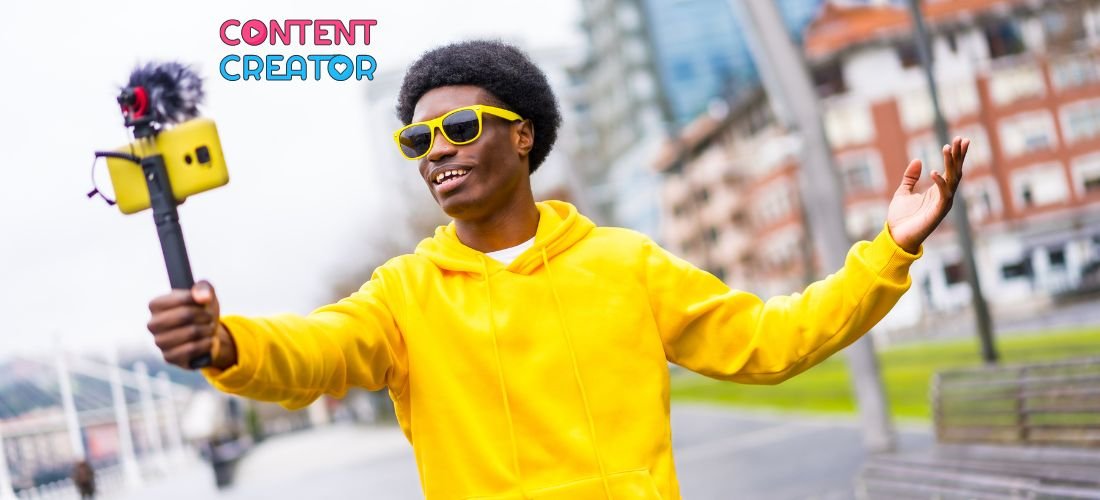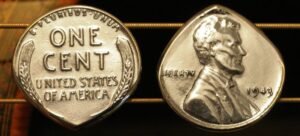Drawing:Burmhcczepe= Car: A Car Drawing Guide
Drawing is more than just a hobby; it’s an expressive art form that allows you to bring your imagination to life. Among the myriad subjects artists can choose from, Drawing:Burmhcczepe= Car have captured the fascination of many. Sleek designs, powerful engines, and dynamic shapes make them a thrilling subject to draw. Whether you’re a seasoned artist or just starting out, capturing the essence of a car on paper can be incredibly rewarding. So grab your pencils and sketchpads as we embark on an artistic journey filled with techniques and tips for drawing cars like never before!
Drawing:Burmhcczepe= Car Step-by-Step

Start with a basic outline. Draw two horizontal ovals for the wheels and connect them with straight lines to define the car’s body.
Next, sketch the shape of the car on top of those lines. Consider rounded edges or sharp angles based on your design preference.
Add details such as windows, doors, and headlights. These elements bring character to your drawing. Experiment with varying shapes—rectangles for windows or curves for fenders.
Once you’re satisfied with the structure, refine your lines using an eraser to clear any unnecessary marks. This step enhances clarity in your drawing.
Then it’s time to add shading and texture. Use hatching techniques for shadows under the car and around its contours.
Finish by coloring if desired; vibrant tones can make your vehicle pop off the page! Enjoy each stage as you transform simple lines into a dynamic representation of automotive art.
Read Also: Ztec100.com | 127.0.0.1:57573 | Crane Rental Prices Per Day and 6 Factors Affect Rental Cost Blog.sentigum.com
Choosing the Right Materials for Drawing:Burmhcczepe= Car
Choosing the right materials can significantly enhance your Drawing:Burmhcczepe= Car experience. Start with quality pencils; softer leads like 2B or 4B work well for shading, while harder leads like H are perfect for fine details.
Paper selection is equally important. Use smooth paper for detailed sketches and textured paper if you want to experiment with various techniques.
For those who enjoy color, colored pencils or markers add vibrancy to your drawings. Watercolor paints can also bring a unique touch but require practice to master.
Don’t overlook erasers! A kneaded eraser helps lift graphite without damaging the paper, while a precision tip eraser allows for clean corrections on small details.
Consider sketching tools like rulers and templates to achieve accurate proportions and curves in your design. With the right combination of materials, you’ll be set up for success in bringing your car concepts to life.
Types of Drawing Techniques: Drawing:Burmhcczepe= Car

Drawing techniques are as diverse as the artists who use them. Each method can evoke different feelings and styles, offering unique ways to express creativity.
Pencil sketching is one of the most fundamental techniques. It allows for precision and control, making it perfect for detailed works or quick studies. Charcoal adds a rich depth and softness that pencil can’t achieve, ideal for dramatic shading.
Ink drawing brings bold lines into play. The contrast between light and dark creates striking compositions. Watercolor painting offers a fluidity that blends colors beautifully, giving life to landscapes and portraits alike.
Digital drawing has surged in popularity with the rise of technology. Artists can experiment endlessly without wasting materials while enjoying features like layers and undo options.
Each technique opens new avenues for artistic expression, inviting you to explore what resonates with your style.
The Importance of Practice and Patience in Drawing
Drawing is a skill that flourishes with practice. Each stroke teaches you something new, building your confidence along the way.
Patience plays a crucial role in this journey. Masterpieces don’t happen overnight. They require time and effort to develop.
When you sit down to draw, embrace the process rather than racing toward perfection. Mistakes are part of learning; they guide your growth as an artist.
Repeatedly sketching shapes helps reinforce muscle memory, allowing your hand to move fluidly across the page. The more you engage with drawing, the more natural it becomes.
Set aside dedicated time for practice without distractions. This focused approach nurtures both discipline and creativity.
Celebrate small victories in each session—whether it’s perfecting a curve or shading techniques. These moments fuel your passion and keep you motivated on your artistic path.
The Art of Drawing:Burmhcczepe= Car: Techniques and Tips
The art of Drawing:Burmhcczepe= Car combines precision with creativity. Each vehicle has unique shapes and lines that challenge an artist’s eye.
Start by mastering basic shapes. Cars can often be broken down into rectangles, circles, and triangles. This makes the initial sketch easier to manage.
Next, focus on perspective. Understanding how a car looks from different angles is crucial for realism. Use vanishing points to guide your lines—this adds depth and dimension.
Shading techniques also play a significant role in bringing your drawing to life. Experiment with hatching and cross-hatching to create shadows that suggest curvature and form.
Don’t forget details like reflections on windows or textures of tires; these add character to your work. Keep practicing different styles—from sleek sports cars to vintage classics—to broaden your skills and find your voice as an automotive artist.
Digital vs Traditional Car Drawing
Digital and traditional car drawing each offer unique experiences. Digital art allows for endless experimentation. Artists can easily undo mistakes, adjust colors, and manipulate layers with a click.
On the other hand, traditional drawing connects you to the materials in a tactile way. The feel of graphite on paper or ink flowing from a pen can be incredibly satisfying. Each stroke carries character; every smudge tells a story.
Digital tools often come with features like brushes that mimic real-life textures. This blurs the line between both mediums, giving artists more choices than ever before.
However, digital art requires screens and software knowledge, which may not appeal to everyone. Traditional methods embrace simplicity but demand patience as corrections take time and thought.
Navigating these two worlds opens doors for creativity. Whether you prefer pixels or pencils is a personal choice shaped by your artistic journey.
Tips for Adding Realism and Detail to Drawing:Burmhcczepe= Car
To bring your car drawing to life, focus on the play of light and shadow. Observe how sunlight interacts with surfaces. Highlight areas that catch light and deepen shadows in recesses.
Textures are key for realism. Use varied line weights to suggest different materials, like sleek metal or rough tires. Incorporate reflections and details on windows for depth.
Pay attention to proportions and angles. A slight tilt can convey motion, while accurate scaling adds credibility.
Adding background elements can also enhance realism. Sketch a road or a cityscape to contextualize your vehicle within its environment.
Don’t shy away from imperfections. Small nuances—dents or scratches—can tell stories about the car’s journey, making it more relatable and authentic in appearance.
Famous Artists and their Car Drawings: Drawing:Burmhcczepe= Car
Throughout art history, cars have captured the imaginations of many renowned artists. Their sleek lines and dynamic forms offer endless opportunities for expression.
One such artist is Paul Cézanne. While primarily known for his still lifes, he brought a unique perspective to car sketches, blending impressionism with automotive design.
Another notable figure is Charles Sheeler. His precisionist style celebrated industrial beauty. Sheeler’s paintings often featured automobiles as symbols of modernity and progress.
Contemporary artists like David Jon Kassan explore hyper-realistic portrayals of vehicles. His works are not just about cars but also delve into themes of culture and identity.
Then there’s the world of graffiti art, where street artists transform vehicles into canvases bursting with color and energy. These creations reflect urban life in vibrant ways.
Each artist adds their flair, showcasing how cars can inspire creativity across various genres.
The Impact of Technology on Car Design: Drawing:Burmhcczepe= Car
Technology has revolutionized car design in remarkable ways. Advanced software allows designers to create intricate models with precision. This shift enables faster prototyping and reduces errors significantly.
3D printing plays a crucial role as well. Designers can now produce complex parts quickly, transforming concepts into tangible products almost overnight. This innovation opens doors for customization like never before.
Moreover, virtual reality (VR) is shaping the way we experience car design. Designers can immerse themselves in their creations, assessing proportions and aesthetics from every angle without leaving the studio.
Sustainability is another critical factor driven by technology. Eco-friendly materials are more accessible due to innovative research, leading to greener designs that appeal to environmentally conscious consumers.
Autonomous vehicles represent a new frontier in car design. Engineers must balance safety features with sleek aesthetics while ensuring user-friendly interfaces that redefine driving experiences altogether.
Common Mistakes to Avoid When Drawing:Burmhcczepe= Car
When Drawing:Burmhcczepe= Car, one of the most common mistakes is neglecting proportions. Cars have distinct shapes and sizes, so getting these right is crucial for realism.
Ignoring perspective can also derail your artwork. A car viewed from an angle will look different than one drawn head-on. Take time to sketch out guidelines that reflect the view you want.
Another frequent error is rushing through details like wheels and windows. These elements add character and authenticity to your drawing.
Many artists forget about shading, which brings depth to their work. Without it, a flat image can appear lifeless.
Don’t overlook reference images. They provide valuable insights into structure and design that can elevate your drawing skills significantly.
Read Also: Mywirelesscoupons.com Games | Enjoy4fun |
Other Creative Ways to Incorporate Cars into Your Drawing:Burmhcczepe= Car
Cars can be a dynamic element in various artistic expressions. Consider integrating vehicles into landscapes or urban scenes. A car parked under cherry blossoms or racing down a busy street adds depth and interest.
Another idea is to play with scale. Draw tiny cars in vast surroundings, like a giant hand holding them up, creating an imaginative juxtaposition that grabs attention.
You could also explore surrealism by blending cars with nature—like vines wrapping around the chassis or trees growing from the hood. This fusion tells stories of harmony between man-made and natural worlds.
Using mixed media offers even more possibilities. Incorporate automotive parts like old license plates or tire prints into your drawings for texture and dimension.
Don’t shy away from designing futuristic vehicles. Let your imagination run wild! Experimenting with shapes and colors opens doors to unique interpretations of what cars could be in another era.
Conclusion:
Creating your own art is a deeply personal journey. Each stroke of the pencil or brush becomes an expression of who you are. It allows for self-discovery and exploration.
Drawing:Burmhcczepe= Car, in particular, can be exhilarating. The curves, lines, and details invite you to immerse yourself in creativity. Every sketch tells a story—a glimpse into your imagination.
Art has no boundaries. Whether you’re capturing speed or elegance, each drawing reflects your unique perspective. This process fosters growth and confidence as you see improvement over time.
Embrace the imperfections along the way; they add character to your work. Enjoy every moment spent creating, as it fuels passion and joy within you.
Celebrate this adventure where ideas transform into tangible creations that resonate with others—art connects us all through shared experiences and emotions. Let each piece inspire future endeavors while nurturing a love for artistic expression.
FAQs:
What are the basic shapes used in drawing cars?
Start with simple geometric shapes like rectangles, circles, and triangles to build the structure of the car.
Do I need advanced skills to draw a car?
Not at all! Everyone starts somewhere. Focus on practice rather than perfection.
How long does it take to become proficient at drawing cars?
It varies by individual. Regular practice coupled with patience will significantly improve your abilities over time.
Can I sketch cars from photographs?
Yes! Using reference images is an excellent way to learn proportions and details without needing access to real vehicles.
What materials do I need for drawing cars?
Basic tools include pencils, erasers, paper, and optionally markers or colored pencils for finishing touches.
Is digital art better than traditional when it comes to car drawings?
Each method has its advantages; choose what you enjoy most!














